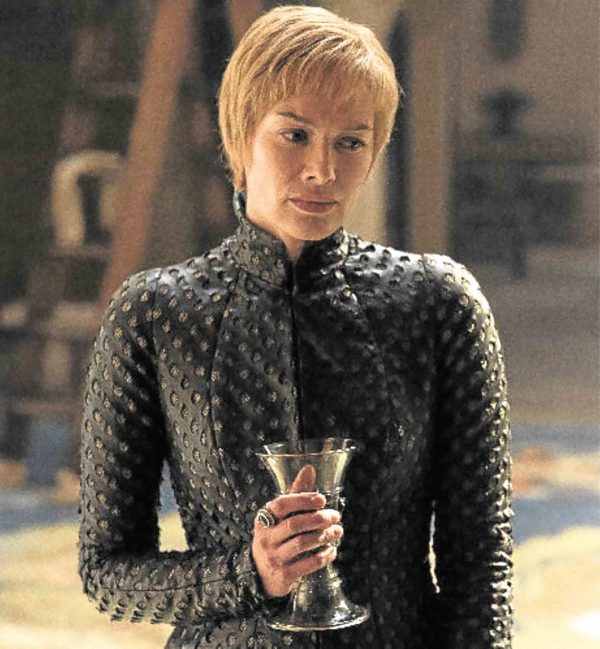
Lena Headey’s character plays the game strategically.
In its previous season-ender, “Game of Thrones” presented a game-changer—the conflict had become an impending war between two once-imperiled women who have been transformed into mighty queens, with a new but reluctant king set to be caught in the middle of the fracas.
In the show’s recently concluded Season 7, the war for the kingdoms of Westeros was grand but oft-baffling. In a season that’s been largely compressed—only seven episodes this time, as opposed to the usual 10—the hit HBO series based on the fantasy books by George R.R. Martin has provided fan-awaited conflicts and interactions, sometimes to disappointing results. Winter is here, indeed—and so are spoilers.
Queen Daenerys Targaryen (Emilia Clarke) leads a consolidated group of allies, with Tyrion Lannister (Peter Dinklage) guiding her. They plot against Tyrion’s mad sister, Queen Cersei (Lena Headey) who, despite having no giant dragons, is already steps ahead of them.
The new King of Winterfell, Jon Snow (Kit Harington), soon pays Daenerys a visit, with the intention of bringing her attention to the real onslaught to come—the army of the undead White Walkers. Conveniently, under her island is “dragon glass,” which must be mined and weaponized, as it is one of the wight horde’s few weaknesses.
Kit Harington as reluctant leader Jon Snow
Meanwhile, Jon’s teen assassin sister Arya Stark (Maisie Williams) is reunited with other long-lost siblings: the now-psychic Bran (Isaac Hempstead Wright), and victim-turned-Lady of Winterfell, Sansa (Sophie Turner). Hovering nearby is the charismatic scoundrel Petyr Baelish (Aidan Gillen), who caused conflicts that ruined their family.
It’s when the Mother of Dragons impulsively goes against strategy that she demonstrates her true, devastating power. But, it’s also that same impulsiveness that ultimately leads to a painful defeat—when one of her dragons is killed by the Night King (Vladimir Furdik). Thereafter, the inevitable truce for survival is pitched to Cersei—and all bets are off.
The season has its share of shockers: Cersei’s “twincest” relationship with her brother Jaime (Nikolaj Coster-Waldau) has practically become “normalized”—it’s still weird, but everyone chooses to just look away. But Jon and Daenerys—who, unbeknown to most, except Bran—are nephew and aunt.
Yes, there are sparks between them, and they consummate the attraction. They have no idea about their real connection, but it doesn’t make it any less strange. Targaryens, though, are said to practice incest. In any case, there will surely be repercussions next season.
Perplexingly, the sixth episode is an example of the unusually speedy depiction of travel time—everyone gets to their destinations on record time! This, as well as the jarring Ed Sheeran cameo, are valid gripes this season.
Acting-wise, Headey stands out as the diabolical queen, and Clarke is commendable as the conflicted leader and liberator—but Diana Rigg, who ends her memorable stint as the king-slaying Lady Olenna this season, is undeniably sublime.
Emilia Clarke as the conflicted Mother of Dragons
When “Game of Thrones” is not being problematic, it’s jaw-droppingly good. Callbacks to earlier scenarios abound, just as long-awaited scenes are satisfyingly presented, such as the Stark and Lannister reunions, and Baelish’s comeuppance.
There are six episodes left in the next season. Hopefully, they’ll be more sensibly and consistently executed than this penultimate one.